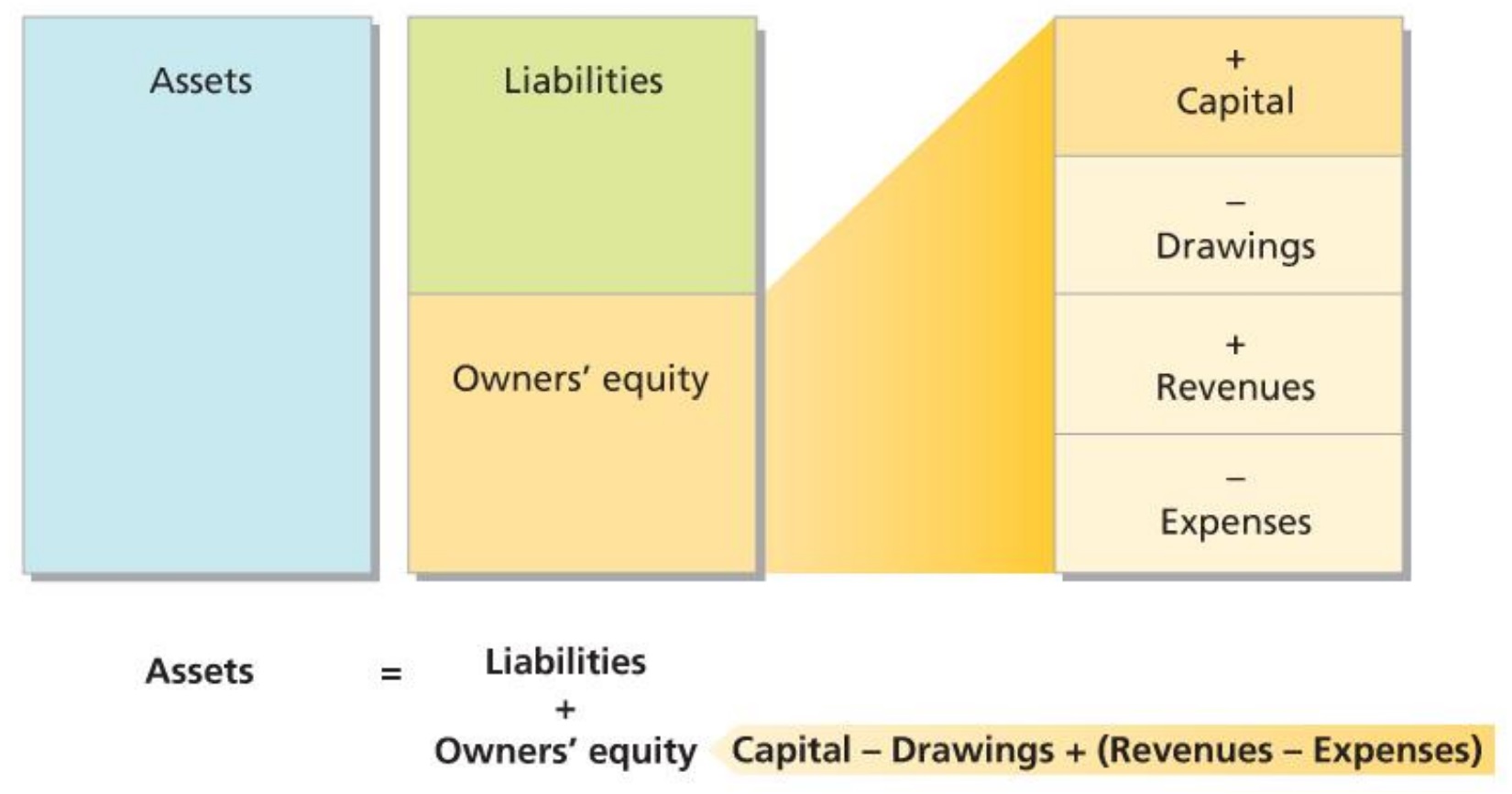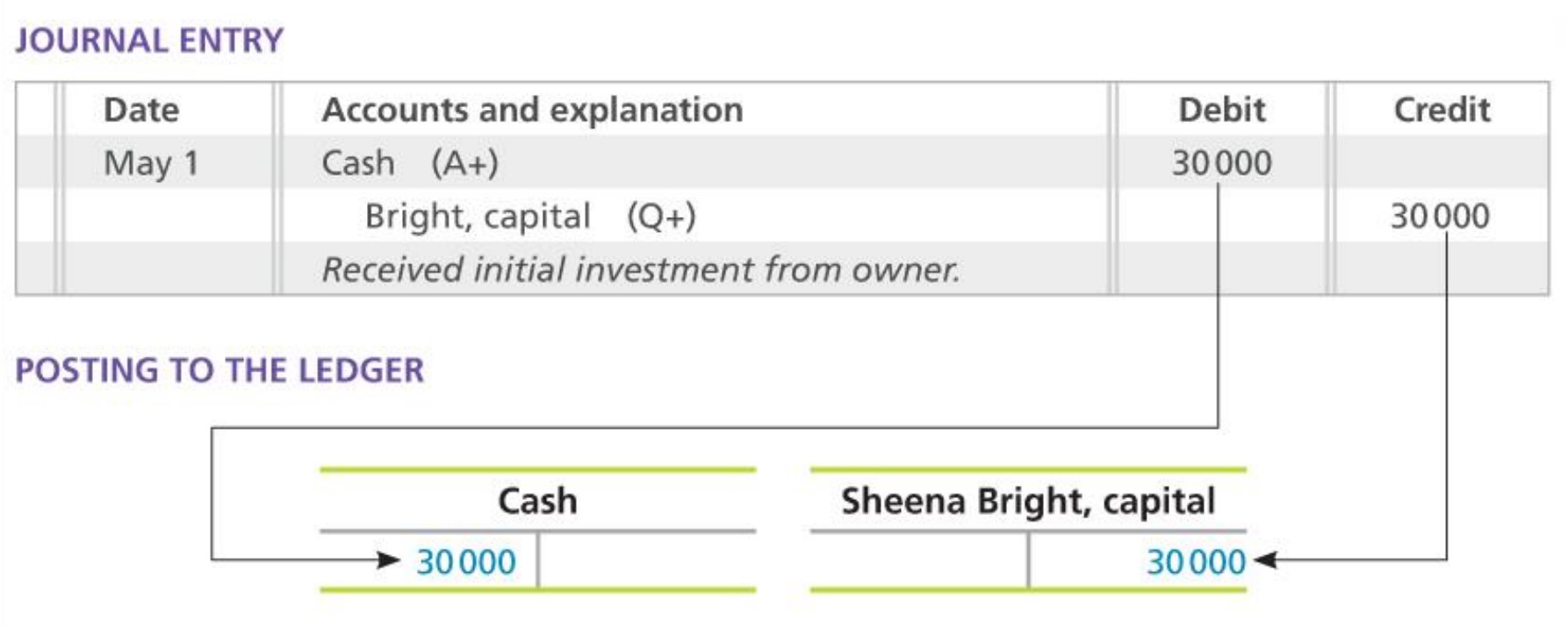Concept
Account - the detailed record of all the changes that have occurred in a particular asset, liability or owners’ equity during a period.
Journal - the chronological record of the transactions.
Ledger - the record holding all the accounts.
Trial balance - the list of all the ledger accounts & their balances.
Asset - the resource
- controlled by an entity as a result of past events
- provide economic benefits to the entity in the future
Liability:
- present obligation
- arising from past events
Owners’ equity: the financial estimate of owners’ claims to the value in a business. Including:
- capital
- drawings
- income
- expenses
Double-entry accounting
Each transaction affects at least two accounts.
Format: T-account
Pattern:
Assets = Liabilities + Owners’ Equity
Debits = Credits

↓ Expansion of the accounting equation

Normal debit balance: Assets, expenses & drawings
Normal credit balance: Liabilities, capital & revenue
Recording transactions
To record transactions in the journal:
- Identify the transaction from source documents.
- Specify each account affected by the transaction and classify it by type.
- Determine whether each account is increased or decreased by the transaction.
- Enter the transaction in the journal, including a brief explanation.
Example:
- On 1 May 2016, Sheena Bright starts the business titled ' Smart Touch Learning‘ by investing $30,000 cash in the business.
| Date | Accounts and explanation | Debit | Credit |
|---|---|---|---|
| May 1 | Cash Sheena Bright, Capital Received investment from owner | 30,000 | 30,000 |
| May 1 Dr. Cash 30,000 Cr. Sheena Bright, Capital 30,000 Received investment from owner |
↓ Copying (posting) information from the journal to the ledger
Flow of accounting information:
- Transaction occurs.
- Source documents prepared.
- Transactions analysis takes place.
- Transactions entered in journal.
- Amounts posted to ledger.
The trial balance:
- Summarises the ledger by listing all the accounts with their balances
- Total debits = Total credits (if not, there is an error)
To find errors, calculating the difference between total debits & total credits on the trial balance.
